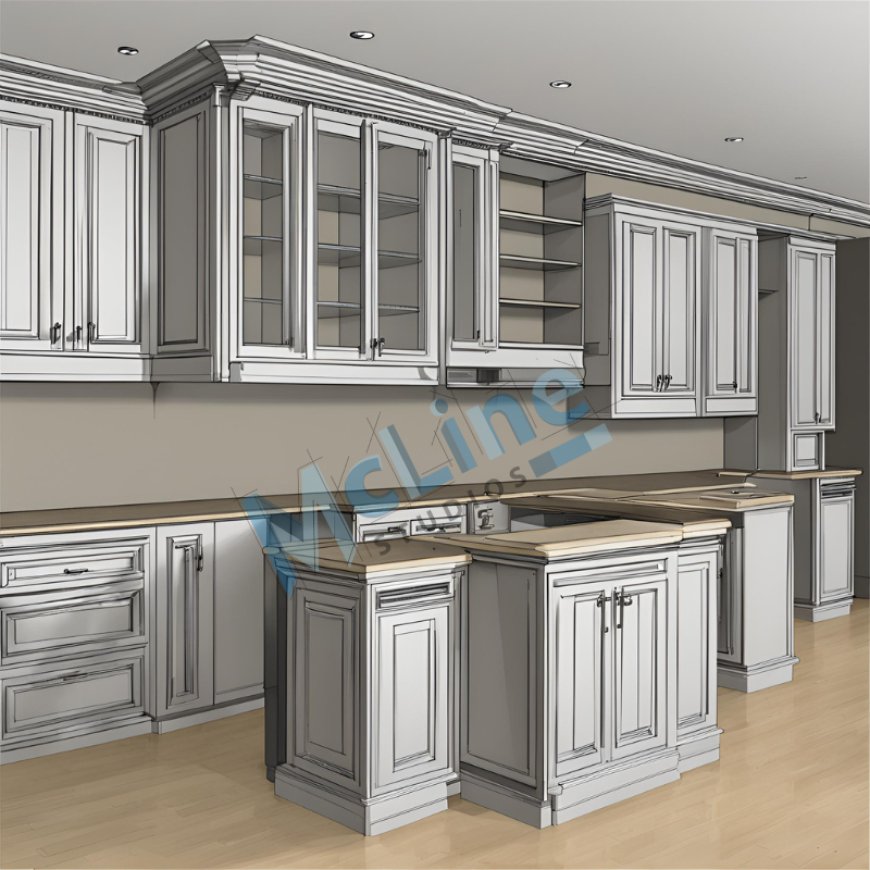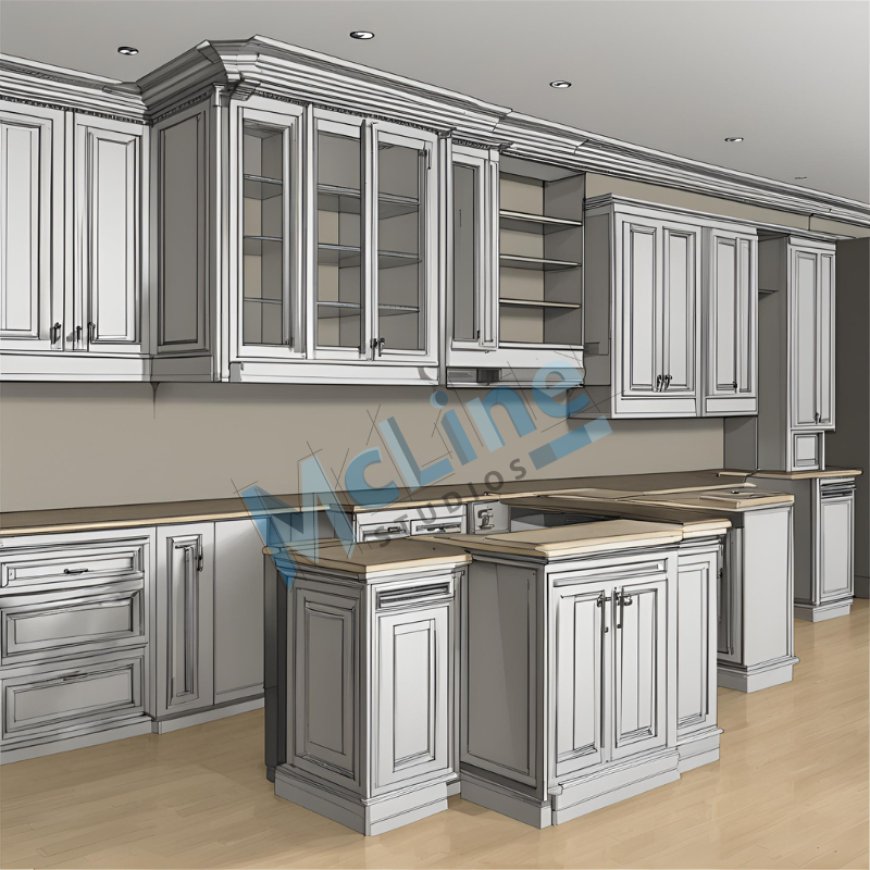Top Millwork Drafting Tools Every Designer Should Know
Millwork drafting involves creating detailed plans and drawings for custom woodwork and cabinetry.

1. Computer-Aided Design (CAD) Software
CAD software like AutoCAD, SketchUp, or SolidWorks is essential for creating precise 2D and 3D drawings of millwork projects. These programs allow you to draft, annotate, and detail your designs with accuracy.
2. Drafting Board and Tools
While traditional drafting boards are less common today, some drafters still prefer them for certain tasks. Tools for a drafting board include:
Drafting table: Adjustable surface for comfortable drawing.
Drafting machine: Helps in creating precise angles and lines.
T-square and triangles: Essential for drawing straight lines and angles.
3. Measuring and Layout Tools
Architect's scale: Used for scaling drawings accurately.
Measuring tape and ruler: For precise measurements.
Calipers: Measure thickness and inside dimensions accurately.
4. Drawing Instruments
Pencils (mechanical and regular): For initial sketches and detailing.
Erasers: Essential for correcting mistakes.
Pens (technical pens or fine liners): Used for finalizing drawings with clean, consistent lines.
5. Templates and Stencils:
Circle templates: These are used to draw circles of various diameters.
Ellipses templates: Aid in drawing ellipses accurately.
Lettering guides: Ensure consistent and neat text on drawings.
6. Computer Hardware
A powerful computer with sufficient RAM and a good graphics card to run CAD software smoothly.
Large, high-resolution monitors for detailed viewing and editing of drawings.
7. Reference Materials
Architectural standards and guidelines: Provide rules and conventions for drawing practices.
Manufacturer catalogs: Reference for standard millwork dimensions and materials.
8. Knowledge of Building Codes and Standards
Understanding local building codes and industry standards ensures that your millwork designs comply with safety regulations and best practices.
9. Communication Tools
Software for collaboration and communication with clients, architects, and contractors. Examples include email, project management software, and video conferencing tools.
10. Continuous Learning
Stay updated with new CAD features, industry trends, and advances in millwork materials and techniques through courses, workshops, and professional associations.
Basic Drafting Tools
Here's a breakdown of basic drafting tools and their applications in millwork drafting:
Scale Rule
A scale rule (or scale ruler) is essential for accurately representing measurements on drawings.
Types:
1. Architectural Scale: Typically used in architecture and construction, it has scales such as 1/4", 1/8", 1/2" per foot, etc.
2. Engineer's Scale: Commonly used in engineering and mechanical drafting, it includes scales like 1:10, 1:20, 1:50, etc.
Using a Scale Rule in Millwork Drafting:
Selecting the Scale: Choose the appropriate scale on the rule that matches the desired dimension ratio.
Measuring and Drawing: Use the selected scale to measure dimensions directly from a blueprint or to draw elements to scale on millwork drawings, ensuring accuracy in proportions and dimensions.
Drafting Triangle
A drafting triangle is used to draw precisely vertical and angled lines.
Purpose:
30-60-90 Triangle: Used for drawing lines at 30°, 60°, and 90° angles.
45-45-90 Triangle: Used for drawing lines at 45° and 90° angles.
Practical Applications in Millwork Drawings:
Angle Measurement: Ensures accurate drawing of angles required in millwork designs, such as mitered corners or angled cuts.
Alignment: Helps in maintaining perpendicularity and straightness in drawings, crucial for precise assembly instructions in millwork.
Compass
A compass is a tool for drawing arcs and circles of varying radii.
Usefulness:
Creating Arcs and Circles: Adjust the compass to the desired radius and pivot point, then draw arcs or circles on millwork drawings.
Detailing Curved Designs: Essential for detailing curved components in millwork, such as ornate trim, curved moldings, or circular cutouts.
Advanced Drafting Tools
Advanced drafting tools build upon the basics and incorporate more specialized equipment and software for intricate and precise drafting tasks. Here are some advanced tools used in professional drafting, including millwork drafting:
1. Advanced CAD Software:
Revit: Specifically designed for building information modeling (BIM), allowing integration of 3D modeling with detailed construction documentation.
MicroStation: Used widely in architectural and engineering firms, known for its robust 3D modeling capabilities.
2. 3D Scanners and Printers:
3D Laser Scanners: Capture detailed spatial data of existing structures or objects, useful for creating accurate models in CAD software.
3D Printers: Produce physical prototypes of millwork designs for client presentations or testing.
3. Computer Numerical Control (CNC) Machines:
CNC Routers: Automate the cutting and shaping of millwork components based on CAD drawings, ensuring precision and repeatability.
CNC Mills: Used for machining intricate details and contours on wood and other materials.
4. Virtual Reality (VR) and Augmented Reality (AR):
VR Headsets: Allows designers and clients to experience millwork designs in a virtual environment, facilitating better visualization and design review.
AR Applications: Overlays digital models onto real-world environments, helpful for on-site visualization and alignment of millwork with existing structures.
5. Parametric Design Tools:
Grasshopper (for Rhino): Facilitates generative design by creating parametric models, enabling designers to explore multiple variations of millwork designs based on defined parameters.
Conclusion
In conclusion, mastering the tools and techniques of millwork drafting requires a blend of traditional drafting skills and proficiency with modern digital tools. The foundational use of CAD software and drafting instruments to advanced technologies like CNC machines and VR applications, each tool serves a crucial role in ensuring the precision and

.
Equally important are knowledge of building codes, continuous learning, and effective communication with stakeholders.
Designers can effectively translate their creative visions into meticulously detailed millwork designs that not only meet aesthetic aspirations but also fulfill functional requirements.
What's Your Reaction?


























